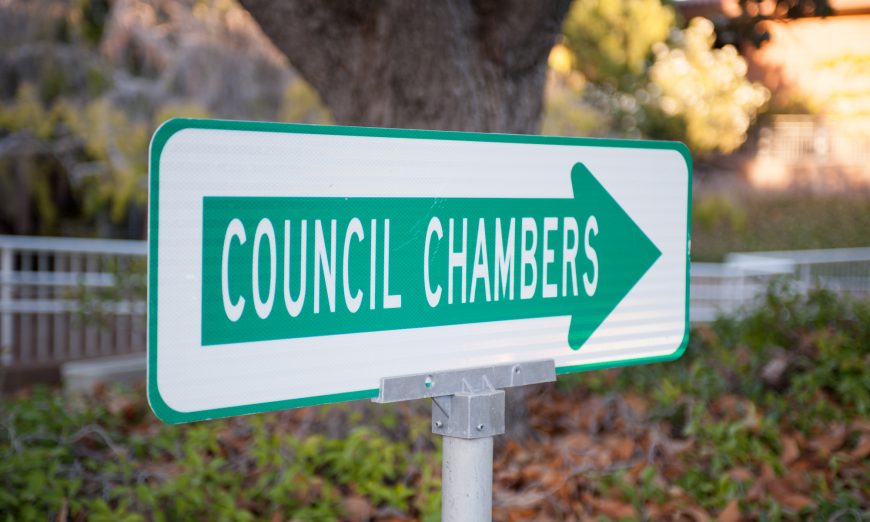Every year I think about how to teach redistricting and gerrymandering to my seniors at Santa Clara High School. It can be boring and seem academic, but this year was different. “Judith” asked why politicians pick the voters instead of the other way around. “Madison” answered with one word: Gerrymandering. As their teacher, I rolled up my sleeves and spent the next hour discussing gerrymandering.
Gerrymandering is the process of giving one political party an electoral advantage over another through geography. Every 10 years the census is taken and districts are redrawn by the political party in power. In Texas, Republicans hold an advantage over Democrats because they are the party in power. In Illinois, the opposite is true: Democrats control the statehouse in Springfield. With such power, the controlling party has undue influence on policy issues like the state budget, legislation and the power to redraw districts in the future.
Judith then asked how did this start and where did the name ‘gerrymandering’ originate? It all goes back to Democratic-Republican (yes, that was a political party at one time) Governor Elbridge Gerry of Massachusetts. Gerry supported and signed a bill to allow redistricting in his state after the 1810 Census. His goal was to give his party more state Senate seats for the 1812 election. The result was an irregularly shaped district that looked like a salamander, the Boston Gazette described the shape as a “Gerrymander,” and the name stuck. The most irregular shaped district today because of gerrymandering is the Illinois 4th congressional district.
The two most common ways to gerrymander districts are to ‘pack’ them with a voting block or ‘crack’ voting blocks with district borders. In both ways, the results are clear: the districts created as safe districts for the political party in power, creating more ideological elected officials, resulting in more gridlock at the congressional and state level, and leading to a lack of confidence by the voters in their politicians.
Case in point: in 2014, when Congress had the lowest approval rating in the history of polling—9 percent, a rate lower than that of Lucifer—over 94 percent of incumbents won re-election.
In 2016, the Cook Report asserted that of the 435 House seats, only 21 of them (just 5 percent) were competitive seats. Even in purple, battleground Ohio, only ONE of the 16 House seats in the Buckeye state was a tossup: ONE! In 1994, there were 63 competitive House seats and in 1984, there were over 100 of them, now only 20! In Alabama, three of the seven House districts did not even have a Democratic opponent to challenge the Republican incumbent due to gerrymandering.
In short, gerrymandering allows the politicians to pick the voters instead of the other way. Incumbents have no impetus to work across the party lines, and every reason to shun bipartisanship—resulting in severe polarization.
Madison then blurted out “can anything be done about this?” I said, yes! Look to states as laboratories of democracy. In 2008, voters in California passed the Voters First Act that created a 14-member commission made of 5 Democrats, 5 Republicans and 4 independent voters—NOT politicians—to redraw the 120 state legislative districts. Voters asked the commission to also redraw the 53 congressional districts. The results are in: the districts are no longer irregularly shaped. Rather, they are contiguous and compacted, the commission created more competitive districts, and some districts have elected more moderate candidates, in some instances even toppling incumbents.
In short, gerrymandering has ended in the Golden State.
Hopefully, other states will follow the California model. Most exciting for good governance advocates, the Supreme Court has heard a Wisconsin case on the undemocratic practice of gerrymandering. Judith commented, “Let’s hope the courts do the right thing and end gerrymandering.” Yes, Madison agreed, “let’s hope the unelected branch of our federal government, restores the constitutional right of voters picking the politicians instead of the politicians picking the voters!”
Dominic J. Caserta, a teacher at Santa Clara High school and City Council Member Seat 5, is running for the Santa Clara County Board of Supervisors in District 4, which includes Santa Clara. He wrote this article for the Santa Clara Weekly.







I hope that Santa Clara’s split into 1 (or more) districts doesn’t result in gerrymandering. Personally, even though I’m a “minority”, I felt it was a privilege to vote for someone to represent the *entire* city under the old system, and I didn’t feel underrepresented.